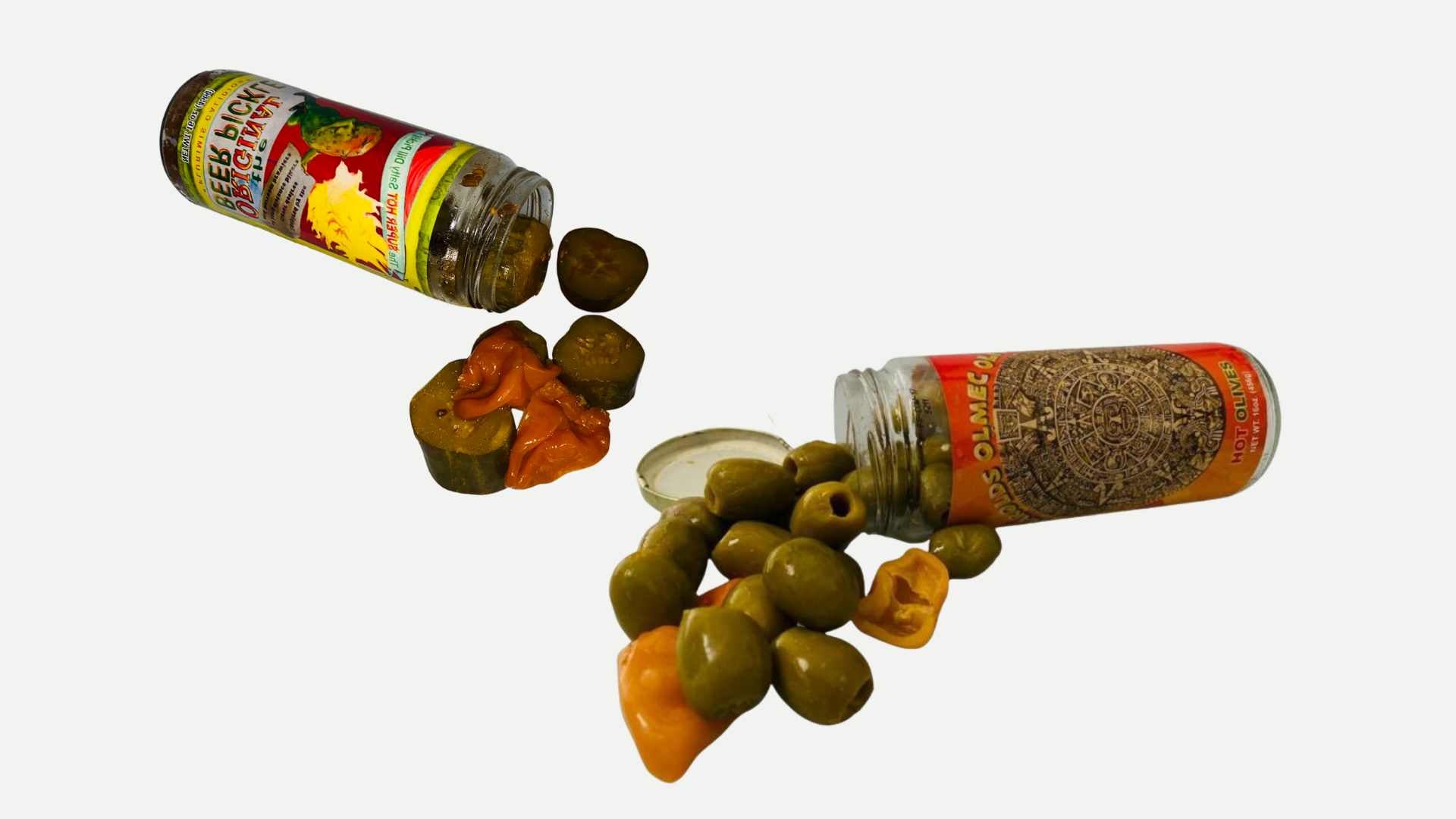Traditional Homemade Pickle
Traditional homemade pickles have been cherished for generations as a delightful meal addition. These tangy and flavorful condiments are created through pickling, which involves preserving fruits or vegetables in a brine solution. This traditional method allows the ingredients to transform, resulting in a unique and delicious condiment.
What Are Traditional Homemade Pickles?
One of the key characteristics of traditional homemade dill pickles is the use of natural preservation techniques. Fermentation, a time-honored method, plays a vital role in creating these culinary delights. During fermentation, the fruits or vegetables sit in the brine for an extended period, allowing beneficial bacteria to develop and enhance the flavors. This natural process contributes to the tanginess of the pickles and increases their nutritional value, as fermentation produces probiotics that promote gut health.

What Are the Three Basic Ingredients in Pickling?
The selection of ingredients for traditional pickles can vary, but common choices include cucumbers, carrots, peppers, cabbage, and fruits like mangoes or plums. These ingredients are carefully chosen based on their texture, flavor, and ability to absorb the pickling liquid.
To embark on the journey of making traditional homemade pickles, start by cleaning and preparing the fruits or vegetables. Ensure they are free from dirt or impurities, and then slice them into desired shape. Next, combine water, vinegar, salt, and sometimes sugar to create a brine solution. This solution provides the necessary acidity and flavor to the pickles. For an extra taste, various spices and flavorings can be added, such as mustard seeds, dill, turmeric, garlic, and cloves.
What Is the Traditional Method of Making Pickles?
The traditional pickle-making method has been passed down through generations for centuries. This technique involves preserving fruits or vegetables by immersing them in a mixture of salt, vinegar, and spices, resulting in a tangy and flavorful condiment. It is known for its simplicity, ability to enhance taste, and prolonged shelf life. The process includes cleaning and slicing the produce, layering it in a sterilized jar with spices, and pouring a saltwater brine. The jar is sealed and stored in a cool, dark place for fermentation. Lactic acid bacteria on the produce convert sugars into lactic acid, giving hot pickles characteristic tanginess. After fermentation, pickles can be refrigerated for storage. They are a versatile addition to sandwiches, salads, and various dishes. This traditional method preserves seasonal fruits and vegetables, ensuring their availability beyond harvest and connecting us to culinary heritage.
The process of making traditional homemade pickles goes beyond creating a delicious condiment. It allows us to preserve our culinary heritage and connect with our roots. Preparing these pickles often evokes fond memories of time spent in the kitchen with loved ones, carrying forward family traditions and creating new ones. Whether you enjoy the crispness and tanginess of fermented pickles or the convenience of quick pickling, traditional homemade pickles bring a burst of flavors and textures to any dish. They are a testament to the art of preserving and serve as a delightful addition to your culinary repertoire.
Cultural Significance of Traditional Homemade Pickles
The history of traditional homemade pickles dates back thousands of years, making them an integral part of various cultures worldwide. Pickling emerged as a method of food preservation, allowing people to store and enjoy fruits and vegetables beyond their harvest seasons. It has played a significant role in cuisine, symbolizing culinary heritage and family traditions.
Traditional homemade spicy pickles showcase region-specific flavors, spices, and techniques, reflecting the local culinary identity. They have cultural significance as staples in celebratory events and represent luck, abundance, and the continuation of customs. Despite the convenience of store-bought pickles, there is a growing movement to revive traditional pickling methods and preserve cultural heritage.
Crafting homemade pickles allows individuals to connect with this ancient preservation technique's rich history and cultural significance. It is an opportunity to embrace unique flavors, maintain culinary traditions, and experience the satisfaction of creating something deeply rooted in cultural identity.

Some Traditional Recipes for Pickling Different Fruits and Vegetables.
Traditional pickling recipes vary across cultures, offering diverse flavors and techniques. Some notable examples include:
Dill Pickles: Made with cucumbers, dill, garlic, and brine of vinegar, water, salt, and pickling spices, they are fermented to develop their tangy flavor.
Kimchi: A staple in Korean cuisine, kimchi involves pickling vegetables like cabbage with salt, chili peppers, garlic, ginger, and other seasonings. The mixture is then fermented to create a spicy and tangy condiment.
Bread and Butter Pickles: These sweet and tangy pickles are commonly made with cucumbers, onions, spices, vinegar, sugar, and mustard seeds.
Sauerkraut: A sour and tangy flavor results from fermenting finely shredded cabbage with salt in this German delicacy. It can be enjoyed as a side dish or used in various recipes.
Pickled Jalapenos: Jalapeno peppers are preserved in vinegar, water, salt, and spices to create spicy pickles that add heat to dishes like tacos and sandwiches.
Pickled Beets: Beets are cooked and then marinated in vinegar, sugar, and spices, resulting in sweet and tangy pickled beets commonly used as a side dish or salad ingredient.
Pickled Radishes: Radishes are sliced and soaked in brine made of vinegar, water, sugar, and spices, becoming crisp, tangy, and vibrant. They add a refreshing touch to salads and sandwiches.
Pickled Peppers: By slicing and soaking various peppers, such as banana or bell peppers, in a vinegar-based brine with spices, you can create tangy and mildly spicy condiments.
These traditional pickling recipes highlight the unique flavors and methods specific to different cultures and regions, offering a delightful variety of pickled delights.
Mouth-watering Pickle
Discover the captivating allure of Pickle, an exceptional blend of tantalizing spices that will transport you on a delightful culinary expedition. With meticulous craftsmanship and recipes passed down through generations, each Pickle is transformed into a flavorful art. Embodying the perfect fusion of carefully selected spices, Pickle transcends its humble origins to create an unrivaled symphony of taste. From the tangy zest of lime pickle to the velvety richness of mango pickle, a diverse range of flavors awaits to entice your palate.
The alchemical pickling process infuses the ingredients with intense flavors, elevating even the simplest dishes to extraordinary heights. Incorporating pickles enhances the flavors and evokes a sense of nostalgia as they carry the legacy of cherished family recipes. Whether used as a condiment, marinade, or standalone accompaniment, pickles bring an exhilarating burst of excitement to every meal, transforming the ordinary into an extraordinary culinary experience. Immerse yourself in the enchanting world of Pickle, where flavors converge, and taste buds rejoice, and let it guide you in creating your gastronomic masterpiece, a testament to the mesmerizing journey of taste and the gateway to pure culinary bliss.
A Healthy Hint of Spice
Traditional homemade pickles are cherished for their tangy and flavorful nature. Adding spice to these pickles can take them to the next level, enhancing the culinary experience. Spices bring flavor, complexity, and warmth to the pickling process. Common spices used in traditional homemade pickles include mustard seeds, dill, turmeric, garlic, and cloves. These spices offer unique flavors and potential health benefits. Incorporating spices can be done by experimenting with combinations, infusing the brine with spices, adjusting the spice level, toasting the spices, and considering the addition of fresh herbs. Starting with small spices and keeping notes of the quantities used will allow for future recipe refinement. Traditional homemade beer pickle can be transformed into delightful culinary masterpieces by embracing the art of pickling and incorporating spices.

Dying Art of Pickling
The art of pickling, a centuries-old preservation method involving fruits or vegetables in brine or vinegar, has recently declined. Factors such as the convenience of store-bought pickles and the fast-paced modern lifestyle have contributed to this decline. However, there is a growing interest in reviving pickling as people recognize the value of reconnecting with cultural heritage, promoting sustainability, and enjoying homemade pickle beer unique flavors and health benefits. Knowledge sharing and education through workshops and online resources are essential to preserving the art of pickling. Reviving pickling preserves traditions, fosters sustainability, and offers a connection to our food heritage. Rediscovering the joy of homemade pickles allows individuals to appreciate this traditional preservation technique's craftsmanship, flavors, and health advantages.
Health Benefits of Pickles
Pickles, particularly those made through fermentation, provide various potential health benefits. They are rich in probiotics, which support a healthy gut microbiome, aid digestion, and boost the immune system. Pickles also retain the nutrients from the vegetables or fruits used in the pickling process, offering vitamins, minerals, and antioxidants. The brine in pickles helps maintain hydration and electrolyte balance. Some studies suggest that vinegar-based pickles may regulate blood sugar and reduce cravings. Pickles also possess antioxidant properties that protect against oxidative stress. However, it's important to consider their sodium content, especially for individuals with high blood pressure or on a low-sodium diet. Enjoying pickles in moderation can contribute to a balanced diet and overall well-being.
Conclusion
Traditional homemade pickles offer a timeless culinary experience. Following traditional pickling methods, you can create your batch of flavorful and unique condiments. So, embrace tradition, experiment with flavors, and savor the joys of traditional homemade pickles. Let these delightful treats infuse your meals with nostalgia and deliciousness, keeping the tradition alive for generations.


